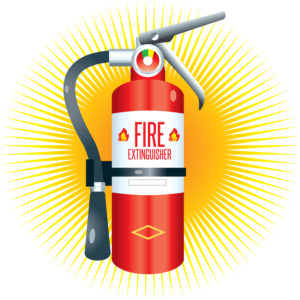Be prepared for emergency situations
September is National Preparedness Month. I talked about this last year, but because I feel this information is so important,we will do a little refreshing. The Wisconsin Emergency Management’s Ready Wisconsin campaign says, now is the perfect time to talk to everyone about getting ready for an emergency or disaster. The most important step you can take today is to make a plan.
As part of National Preparedness Month, we’re encouraging families to put together a plan that includes information on where to go during an emergency and how to communicate with loved ones if separated in a crisis.
This means having an up-to-date contact list for those you may need to reach during a disaster and establishing alternate methods of communication in case traditional means are not available. Today, we all rely on our cellphones to hold this valuable information but you want to make sure you have hard copies in case the batteries die or cell towers go down.
Text messages are a great way to communicate. Phone voice service is easily overwhelmed due to the number of calls being placed and may be unavailable in an emergency. Cell phone text messages can still get through because they take less bandwidth to deliver.
Also, calling long distance may be easier than making a local call. Ask a friend or family member to be your “out of town” contact. You can let that contact know you’re ok. That contact can then share that information with your loved ones.
Getting information before, during, and after an emergency can be difficult. One of the best ways to get warnings of impending and current dangers is with a NOAA Weather Radio. These radios will alert you to storms headed your way.
Other emergency information is also broadcast using this system. Emergency messages are also delivered directly to your cell phone through Wireless Emergency Alerts. These alerts are free and the software is preloaded on most cell phones. Through these alerts you’ll receive a short text message about the pending danger.
Now it’s time to put together your “go kits.” When making your “go kit” pack the following for everyone, 3 gallons of water per person for drinking and sanitation, non-perishable food, manual can opener, if your kit contains canned food.
Purchase a battery-powered NOAA Weather Radio and a commercial radio or hand crank radio, flashlights and extra batteries. You will need a sleeping bag or warm blanket for each person. Learn how to take care of emergencies and have a first aid kit and emergency medical reference manual, prescription medications and eyewear.
Put together a camp kitchen with mess kits, paper cups, plates and plastic utensils, paper towels, moist towels, garbage bags and ties.Each person needs a complete change of clothing, including a long-sleeved shirt, long pants, socks and sturdy shoes — add outdoor gear in winter.
You will need plenty of cash in small denominations or traveler’s checks and change. If the system is down debit and credit cards may not work. Store this safely since you may be a target if you flash cash out in public. Make copies of important family documents, such as insurance policies, identification and bank account records in a waterproof, portable container.
Put together a tool kit to include a wrench or pliers to turn off utilities. Pack matches, lighter and fire starting materials in a waterproof container. You can use household chlorine bleach and medicine dropper (diluted nine parts water to one-part bleach) to disinfect. Use a dust mask or army surplus chemical mask to help filter contaminated air, and plastic sheeting/duct tape to seal us your home.
Every household should have an emergency kit with enough supplies to see you through three days following a natural disaster, health or manmade emergency. Start out thinking about the basics of survival — fresh water, food, safety, warmth, sanitation and clean air.
Have national and local maps that show any and all available roads to navigate to a safe area.Keep books, games, puzzles or other activities for children,along with paper, pens and pencil.A fire extinguisher, smoke detector, CO2 alarm can save your life when you have to build a make shift shelter.
Use awhistle to signal for help,keep track of others in your group and pets. As far as pets go, make sure you have their identification tags on collars,medications and veterinary immunization records. Have plenty offood, drinking water, bowls, cat litter/pan and can opener,sturdy leashes or carriers to transport pets safely.
They will also need towels or blankets,current photos of you with your pets,feeding schedules, medical conditions, behavior problems, and the name and phone number of your veterinarian.Next week we will continue with information for “National Safety Preparedness Month”, start planning and get your “go kit” done before the next step.
Until next week, stay safe
Chief Rindfleisch


